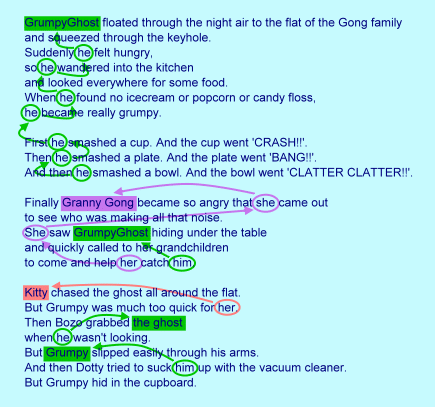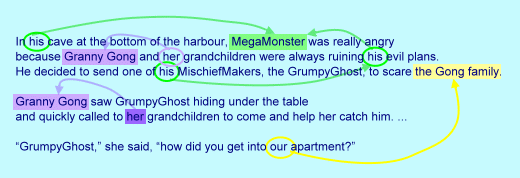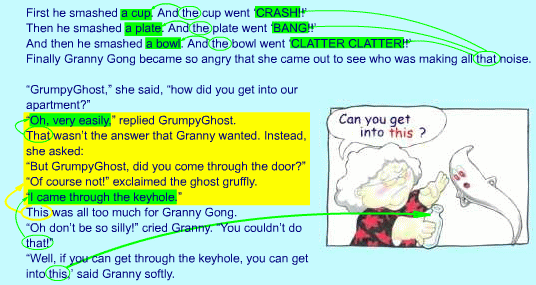Communicative functions: Creating links in text
| Making links to people, places & things in texts: Pop-up notes |
All the pop-up screens from this PrimeGram file have been copied here so that you can print them out easily.
Using pronouns
| Note |
When pronouns are used to point outwards to something in the
environment, we call it 'external' reference (or 'exophoric' reference). |
| Note |
When pronouns are used to point to something inside the text, we
call it 'internal' reference (or 'endophoric' reference). |
| Analysis |
 |
| Example |
UPSTAIRS I went upstairs - John Stevens Wade Notice that in this text we never find out what 'it' relates to. What do you think the poem is about? |
| Analysis |  |
Using demonstratives
| Analysis |  |
Using comparatives
| Note | A good way of seeing if a cohesive link is being
made is to take a clause or sentence out of context and see whether it makes
sense. If it doesn't make
complete sense on its own, then it probably means you need to look elsewhere
in the text (or in the physical environment) for the meaning. In this way, you
can identify which items are cohesive (ie making a link elsewhere). |
![]()